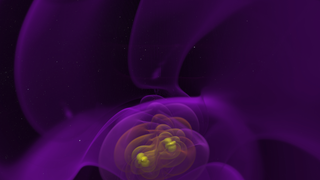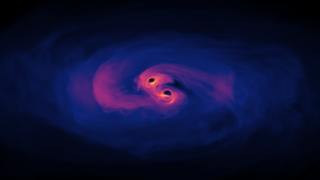Universe
ID: 14130
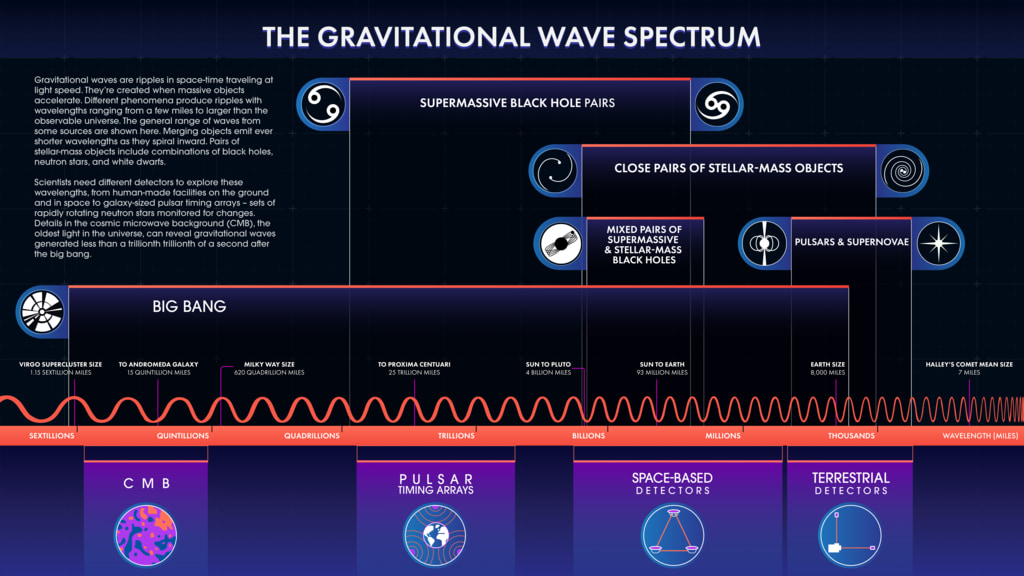
Our universe is a chaotic sea of ripples in space-time called gravitational waves. Astronomers think waves from orbiting pairs of supermassive black holes in distant galaxies are light-years long and have been trying to observe them for decades, and now they’re one step closer thanks to NASA’s Fermi Gamma-ray Space Telescope.
Fermi detects gamma rays, the highest-energy form of light. An international team of scientists examined over a decade of Fermi data collected from pulsars, rapidly rotating cores of stars that exploded as supernovae. They looked for slight variations in the arrival time of gamma rays from these pulsars, changes which could have been caused by the light passing through gravitational waves on the way to Earth. But they didn’t find any.
While no waves were detected, the analysis shows that, with more observations, these waves may be within Fermi’s reach.
When massive objects accelerate, they produce gravitational waves traveling at light speed. The ground-based Laser Interferometer Gravitational Wave Observatory – which first detected gravitational waves in 2015 – can sense ripples tens to hundreds of miles long from crest to crest, which roll past Earth in just fractions of a second. The upcoming space-based Laser Interferometer Space Antenna will pick up waves millions to billions of miles long.
Scientists are searching for waves that are light-years, or trillions of miles, long and take years to pass Earth. These long ripples are part of the gravitational wave background, a random sea of waves generated in part by pairs of supermassive black holes in the centers of merged galaxies across the universe.
To find them, scientists need galaxy-sized detectors called pulsar timing arrays. These arrays use specific sets of millisecond pulsars, which rotate as fast as blender blades. Millisecond pulsars sweep beams of radiation, from radio to gamma rays, past our line of sight, appearing to pulse with incredible regularity – like cosmic clocks.
As long gravitational waves pass between one of these pulsars and Earth, they delay or advance the light arrival time by billionths of a second. By looking for a specific pattern of pulse variations among pulsars of an array, scientists expect they can reveal gravitational waves rolling past them.
Radio astronomers have been using pulsar timing arrays for decades, and their observations are the most sensitive to these gravitational waves. But interstellar effects complicate the analysis of radio data. Space is speckled with stray electrons. Across light-years, their effects combine to bend the trajectory of radio waves. This alters the arrival times of pulses at different frequencies. Gamma rays don’t suffer from these complications, providing both a complementary probe and an independent confirmation of the radio results.
Within the next decade, both radio and gamma-ray astronomers expect to reach sensitivities that will allow them to pick up gravitational waves from orbiting pairs of monster black holes.
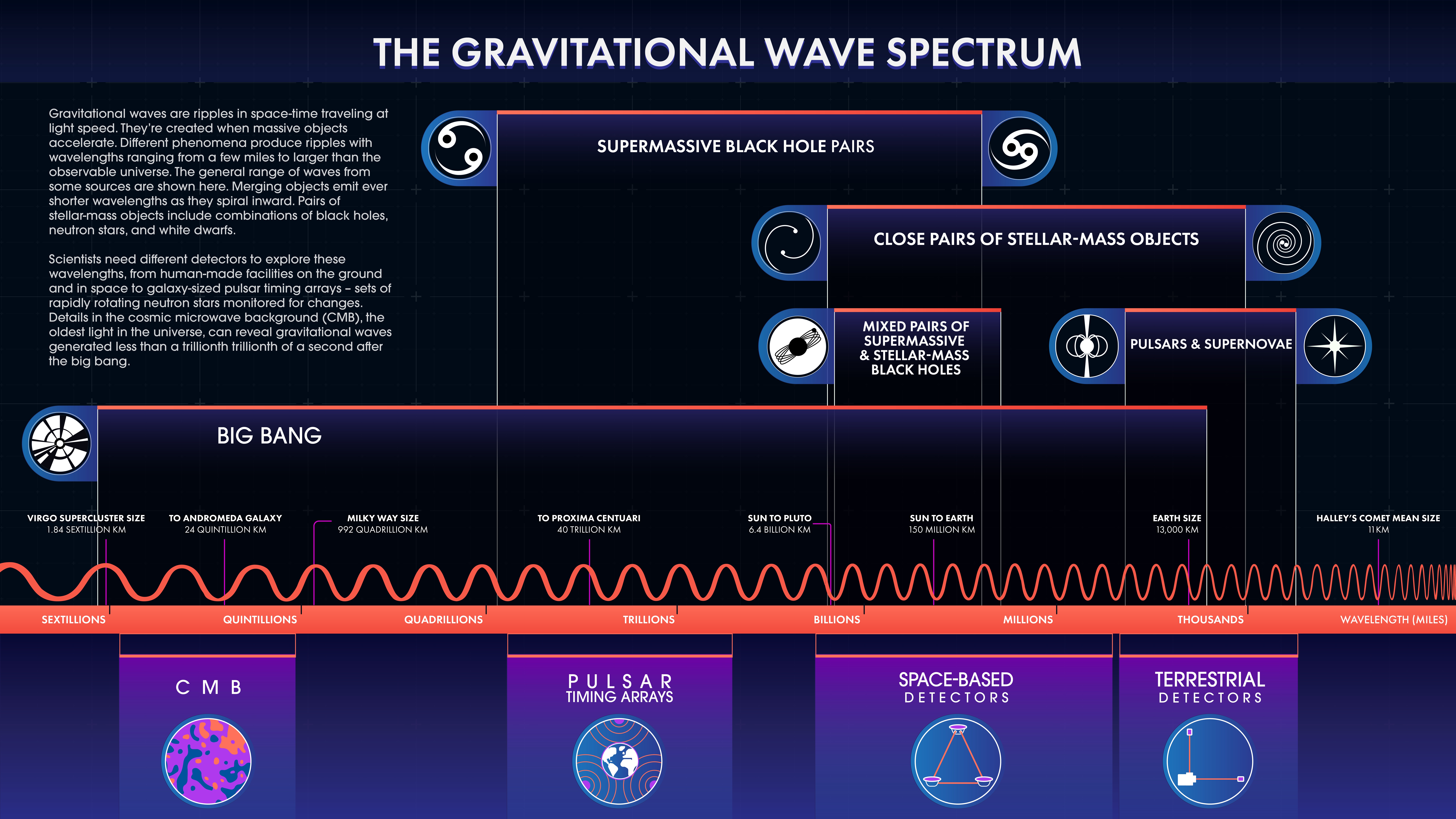
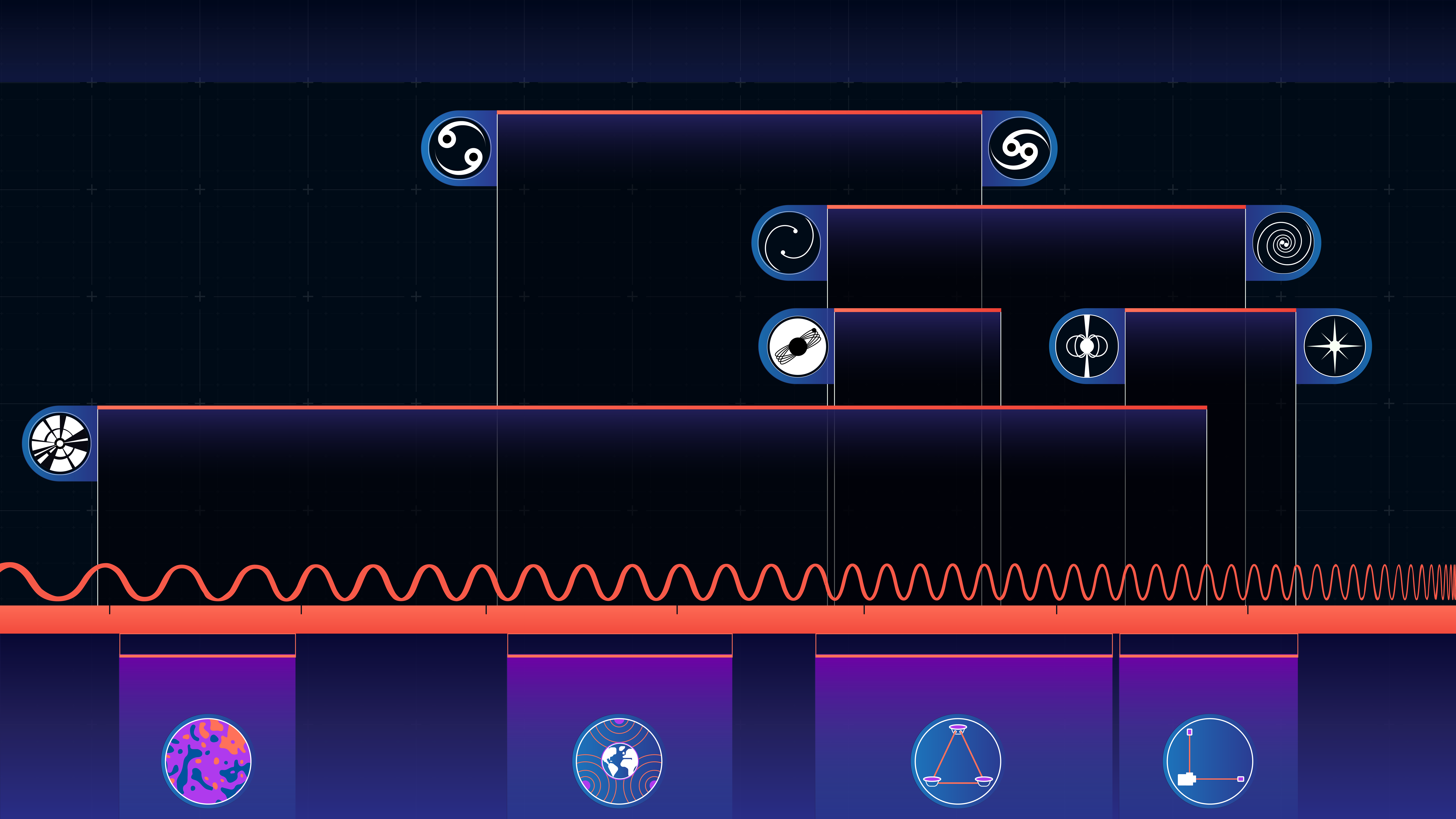
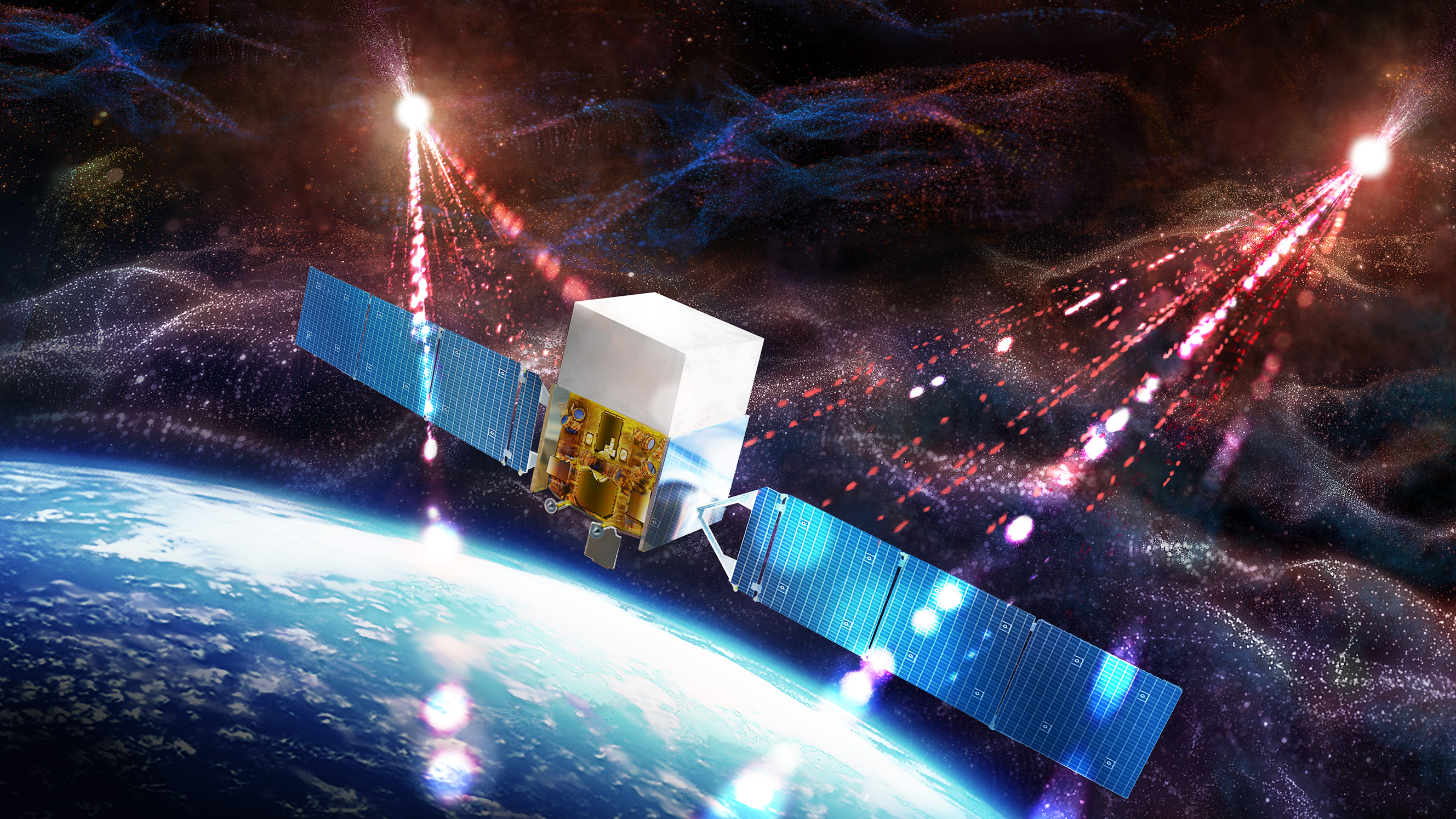

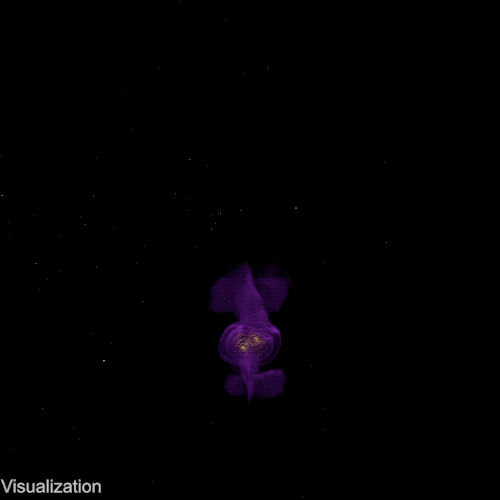
Fermi Searches for Gravitational Waves From Monster Black Holes

Fermi detects gamma rays, the highest-energy form of light. An international team of scientists examined over a decade of Fermi data collected from pulsars, rapidly rotating cores of stars that exploded as supernovae. They looked for slight variations in the arrival time of gamma rays from these pulsars, changes which could have been caused by the light passing through gravitational waves on the way to Earth. But they didn’t find any.
While no waves were detected, the analysis shows that, with more observations, these waves may be within Fermi’s reach.
When massive objects accelerate, they produce gravitational waves traveling at light speed. The ground-based Laser Interferometer Gravitational Wave Observatory – which first detected gravitational waves in 2015 – can sense ripples tens to hundreds of miles long from crest to crest, which roll past Earth in just fractions of a second. The upcoming space-based Laser Interferometer Space Antenna will pick up waves millions to billions of miles long.
Scientists are searching for waves that are light-years, or trillions of miles, long and take years to pass Earth. These long ripples are part of the gravitational wave background, a random sea of waves generated in part by pairs of supermassive black holes in the centers of merged galaxies across the universe.
To find them, scientists need galaxy-sized detectors called pulsar timing arrays. These arrays use specific sets of millisecond pulsars, which rotate as fast as blender blades. Millisecond pulsars sweep beams of radiation, from radio to gamma rays, past our line of sight, appearing to pulse with incredible regularity – like cosmic clocks.
As long gravitational waves pass between one of these pulsars and Earth, they delay or advance the light arrival time by billionths of a second. By looking for a specific pattern of pulse variations among pulsars of an array, scientists expect they can reveal gravitational waves rolling past them.
Radio astronomers have been using pulsar timing arrays for decades, and their observations are the most sensitive to these gravitational waves. But interstellar effects complicate the analysis of radio data. Space is speckled with stray electrons. Across light-years, their effects combine to bend the trajectory of radio waves. This alters the arrival times of pulses at different frequencies. Gamma rays don’t suffer from these complications, providing both a complementary probe and an independent confirmation of the radio results.
Within the next decade, both radio and gamma-ray astronomers expect to reach sensitivities that will allow them to pick up gravitational waves from orbiting pairs of monster black holes.





Related
For More Information
Related Documentation
GravWav_Infographic_KM_vFinal.pdf
GravWav_Infographic_MILES_vFinal.pdf
GravWav_Infographic_textless_vFinal.pdf
GravWav_Infographic_Miles_vFinal.pdf
GravWav_Infographic_MILES_vFinal.pdf
GravWav_Infographic_textless_vFinal.pdf
GravWav_Infographic_Miles_vFinal.pdf
Credits
Jeanette Kazmierczak (University of Maryland College Park): Lead Science Writer
Scott Wiessinger (KBR Wyle Services, LLC): Lead Producer
Krystofer Kim (KBR Wyle Services, LLC): Lead Graphic Designer
Scott Wiessinger (KBR Wyle Services, LLC): Lead Producer
Krystofer Kim (KBR Wyle Services, LLC): Lead Graphic Designer
Please give credit for this item to:
NASA's Goddard Space Flight Center. However, individual items should be credited as indicated above.
NASA's Goddard Space Flight Center. However, individual items should be credited as indicated above.
Science Paper:
https://www.science.org/doi/10.1126/science.abm3231
Short URL to share this page:
https://svs.gsfc.nasa.gov/14130
Mission:
Fermi Gamma-ray Space Telescope
This item is part of this series:
Astrophysics Stills
Keywords:
SVS >> Galaxy
SVS >> Neutron Star
SVS >> Black Hole
SVS >> Astrophysics
SVS >> Gravitational Waves
SVS >> Universe
SVS >> Pulsar
SVS >> Space
SVS >> Supernova
SVS >> Star
NASA Science >> Universe
SVS >> Supermassive Black Hole
https://www.science.org/doi/10.1126/science.abm3231
Short URL to share this page:
https://svs.gsfc.nasa.gov/14130
Mission:
Fermi Gamma-ray Space Telescope
This item is part of this series:
Astrophysics Stills
Keywords:
SVS >> Galaxy
SVS >> Neutron Star
SVS >> Black Hole
SVS >> Astrophysics
SVS >> Gravitational Waves
SVS >> Universe
SVS >> Pulsar
SVS >> Space
SVS >> Supernova
SVS >> Star
NASA Science >> Universe
SVS >> Supermassive Black Hole
